Your car has a handbrake to hold it in place when needed. Similarly, boats have anchors. You slip them off the side of the boat and let them sink to the ocean floor, where they dig in stop your boat from drifting. You can use anchors in oceans and rivers too. But how do they work? Let’s look into specific types of boat anchors so we can find out which one suits you.
Parts of a Boat Anchor
First off, boat anchor types are further subdivided into six main categories. These are:
- Plow anchors – Hinged with a plow-like scoop
- Claw Anchors – Three forked claws
- Fluke Anchors – Hinged shank and flat flukes
- Hook Anchors – Hooks that fan out
- Wing Anchors – Solid angular one-piece wing
- Modern Anchors – Unorthodox hi-tech designs
On oceans or seas, these anchors work by digging into the seabed and using the weight of the chain to hold the ship in place. Things are a bit different in freshwater. But either way, most anchors are made of stainless steel or aluminum, and have the following parts:
- Fluke – This is the tip of the spikes or wings that dig into the waterbed.
- Shank – This is the ‘vertical’ piece of the anchor.
- Arms – These connect the fluke to the shank.
- Palms – These are the flattened sections of the fluke.
- Crown – Some anchors have a base piece that holds everything else together.
- Stock – In traditional anchors, the stock crosses the shank at the crown.
- Eye – At the top of the shank, the eye is a hole where you attach the line.
- Ring – This is a link that attaches the eye to the line.
- Shackle – Some anchor models use a shackle and pin in place of a ring.
- Pin – On some anchor models, this loops through the eye to lock the chain.
- Line – This can either be a link of chains or rope.
- Hinge – This connects the flukes to the shank if your anchor is a hinged model.
Incidentally, a shackle can be used to join several lengths of anchor chains. They may come in 90ft sections with a red shackle between them. The chain links on either side of the red joint are painted white. And a numbered code helps sailors see how much of the line is out. This is called marking the chain, and you can try it at any distance using rubber markers.
different types of boat anchors
Now let’s look at specific boat anchor types, where to use them, and how to tell them apart.
1. Hook Anchor
A hook anchor is sometimes called a grappling anchor. Grapnels were the first patented brand, but lots of others have followed suit. The hook anchor has four or more spiraling spikes called hooks. On some models, the hooks fold into an umbrella-like rod for storage.
2. Plough Anchor
Visually, plow anchors are a cross between claw, wing, and fluke anchors. It has a hinged shank, just like flukes. It has a single prong that’s shaped like a wing anchor. And the tip is shaped like the center fork on a claw anchor. Plow anchors are sometimes called scoops.
3. Claw Anchor
A claw anchor has three forks or claws that look a bit like a clover or a fleur-de-lys. These claws scoop up the sand or muck and release it to anchor the boat. The first trademark claw anchor was a Bruce, but these days, there are lots of generic claw anchors you can purchase.
4. Fluke Anchor
Pretty much all anchors have flukes. But the first trademarked fluke anchor was a Danforth. After the patent expired, other companies made anchors in this design – but they can’t call them Danforths so they have to use the generic name. Fluke anchors can fold flat for storage.
5. Wing Anchor
The first wing anchor ever was a Delta – that was its trademarked name. But today, lots of wing-style anchors are available on the market. Unlike other anchors that have separate parts, wing anchors are a single piece. Generic ones often have the shank welded to the fluke.
6. Spade Anchor
Spade anchors blend the best of delta and plow anchors. They got rid of that dreaded hinge on plow anchors. Unlike deltas, they have a bright yellow fluke with a centralized welding seam. If they fall sideways, the shape and chain pull the fluke back into the correct position.
7. CQR Anchor
CQR is the first plow anchor ever made, and once the patent expired, other brands started making generic versions. The downside of plow anchors is the lateral positioning of the hinge. When the boat tugs on the shank, the anchor often turns sideways and won’t set well.
8. Danforth Anchor
This trademark anchor is easily identifiable. It was the first anchor with a hinge and foldable flukes. The stock is a narrow rod anchored at the crown, pun intended. The shank is flexible, and this anchor can be folded and tucked away, but the anchor is useless on rocky ground.
9. Grapnel Anchor
A grapnel anchor is a modified hook anchor. Unlike regular hooks that are rigid and sturdy, grapnel hooks fold flat into a single rod-like structure. Also, unlike other anchors where the eye is at the opposite end of the shank, grapnel anchors have an eye under the folding hooks. Grapnel anchors (and other hook anchors) do better on rocky sea beds but are bad on sand.
10. Delta Anchor
This branded anchor is the first wing anchor ever made. It’s molded from a single metal sheet and has a single tooth or prong that’s shaped like an angular scoop. That triangular silhouette makes this the strongest anchor design around, and it often gets tweaked by rivals.
11. Bruce Anchor
The original patent claw anchor was a Bruce. This name-brand anchor was often made of stainless steel, which is pretty and shiny, but also quite expensive. The sturdy anchor was popularised on oil rigs. It’s molded from a single piece of metal with no stock and no seams.
12. Modern Anchor
Contemporary anchors try different shapes and styles to meet today’s sailing needs. They often pick bits and bobs from existing anchors, so they can be tough to classify. But examples of these experimental anchors include box anchors, Mooloolaba, Bulwagga, and Hurricane.
13. Mushroom Anchor
A mushroom anchor has a dome-shaped base that easily lets mud and swampy water filter through. It’s a lightweight anchor that uses a polyester line rather than a chain. This freshwater anchor is ideal for rivers and works best with jet skis, dinghies, and row boats.
14. Luke Anchor
A luke anchor sometimes called a fisherman’s anchor, is probably what you picture when you think about boat anchors. They have curved arms with a pointed crown and flukes. They also have a stock at the opposite end, which was meant to weigh down the anchor and hold it flat on the seabed. Many modern anchors have no stocks, opting for stronger pivots instead.
15. Stockless Anchor
Lots of modern anchors have eliminated the stock. Instead, they’ve been rebalanced to put more weight on the flukes. The stereotypical stockless anchor is a modified version with two large perpendicular flukes. The Japanese navy prefers these anchors over other navy styles.
16. Admiralty Anchor
Admiralties are fisherman’s anchors by another name. But while fisherman’s took their name from St. Luke, that famous fisher of men with a medical degree, the admiralty anchor is named after the initial UK government department that was in charge of the navy.
17. Ultra Anchor
The ultra anchor is an upgraded version of wing anchors. The lower surface has angles and planes that make it easier to recover your anchor. The hollow shank and curved lead-lined fluke tips sink the anchor deeper. This lets it set effectively even when it’s lying on its side.
18. Fob Anchor
In many ways, a fob anchor is just like a fluke anchor. Some models have a swinging shank while others have a stationary one. The main difference is that the crown has finger grips at its tips. This makes it easier to lift the anchor when you want to shift it around or clean it.
19. Hall Anchor
A hall anchor is a stockless mooring anchor with a pronounced crown. The crown is bulky enough to stand flat, positioning the flukes at a vertical angle. This alignment lets the anchor sit heavier on the seabed, which provides a better grip and stops the anchor tipping sideways.
20. Rocna Anchor
Rocnas build on the success of deltas and spades. But while deltas have a V-cut above the welding joint and spades have a broader, concave surface with a centralized seam, rocnas have a hollow semicircular roll bar over the blade. It keeps the fluke from toppling sideways. Modified rocnas have shackle rails along the shank. Others like the Vulcan have no roll bar.
21. Bügel Anchor
Higher Rocnas (6 and beyond) have a shackle rail in addition to the eye. This lets the chain or line slide up and down the shank for easier retrieval. But bügel anchors combine the roll bar of Mantus anchors with a fluke that’s similar to spades and plows… except it’s flat.
22. Manson Ray Anchor
The Manson Ray is a brand name anchor designed in the claw style. It’s molded from a single sheet of metal and the side claws help it grip the ground. But like many claw anchors, it often tips sideways, leaving only one claw submerged, so it’s not as steady when it sets.
23. Britany Anchor
This modified fluke anchor does away with the hinged stock. Instead, the crown is welded to the flukes with a small crossbar, allowing the anchor to lie flat in the boat as well as the seabed. In theory, this makes it easier to bite into sand, seaweed, and other plant matter.
24. Fortress Anchor
A fortress anchor is a post-patent fluke anchor brand, meaning it was designed to mimic the Danforth. It’s made of aluminum and just like all fluke anchors, it has a crown made of vertical base plates. These help the anchor sit flat on the ocean floor. They work best in mud.
25. Box Anchor
A typical anchor needs sandy or muddy ground because it will skim over rocks and seaweed. But box anchors have a hollow box shape and outward-facing flukes on their top and bottom sides. This way, even if the anchor flips, it will course-correct into a 45° angle, even in murky beds. This is why box anchors don’t need chains. You can tie them directly to a rope or a line.
26. Freshwater Anchor
The main difference between freshwater anchors and saltwater anchors is their construction material. Marine anchors are made of galvanized steel, aluminum, or stainless steel, while freshwater anchors might have a protective vinyl film over a base of cast iron or carbon steel.
27. Mantus Anchor
Mantus anchors follow the example set by rocnas. They have a larger roll bar though. And unlike other wing anchors that are welded or molded, the Mantus comes in three separate pieces that need to be bolted together. Mantus anchors have a stronger downward push.
28. UHHH’ooooksHurricane Anchor
The hurricane is another mix-and-match contemporary anchor. It has two flat flukes and a roll bar. These work together to keep the blades flat on the seabed and sink them into the sand or mud. Depending on which model you purchase, hurricanes can be welded or bolted.
29. MoolojjuhihuihiMMooloolaba Anchor
Mooloolabas – sometimes called reef anchors – take their inspiration from folding grapnel anchors. The spiked flukes flank the shank to form acute angles and offer extra setting surfaces. Since the anchor has hook flukes on all four sides, even if the anchor topples, it can still grip the seabed sufficiently. Mooloolabas have ringed eyes on both ends of their shanks.
30. Bulwagga Anchor
Bulwagga anchors are quite popular, though they’re no longer in production. They have three flukes welded onto a hollow triangular base. Most anchors struggle on rocky ground because they slip over the surface. Bulwaggas are particularly good in sand, mud, even stony seabeds.
31. Nautical Navy Anchor
The Navy anchor is a variant of the fisherman’s, luke, or kedge anchor. The difference is that the stock is shorter and sits lower on the shank. The eye is bigger too. Of course, the anchors typically used by modern navies are stockless. But this icon is still popular as a sailor tattoo.
32. River Anchor
River anchors are smaller than marine ones. They are used in rivers, streams, ponds, or dams. The anchor has three ‘ears’ that tip the anchor onto its side when it hits that soft, mushy waterbed. The ears scoop and release any sand, weeds, or mud without getting tangled up.
33. Fisherman’s Anchor
Our last anchor has that stereotypical design. But it’s an upgrade of the St. Luke anchor that it was based on. Instead of a permanent stock, many fisherman’s anchors – also called kedge anchors – have an L-shaped stock with a ball-shaped tip. The stock is screwed into position.
Do you know any boat anchor types we haven’t mentioned? Share them in the comments!
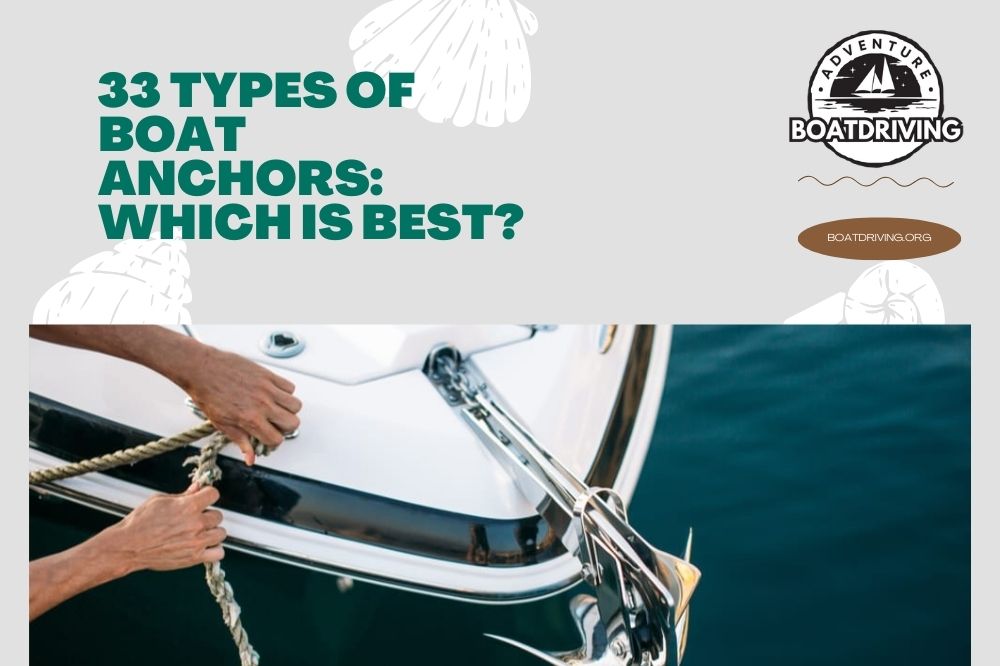
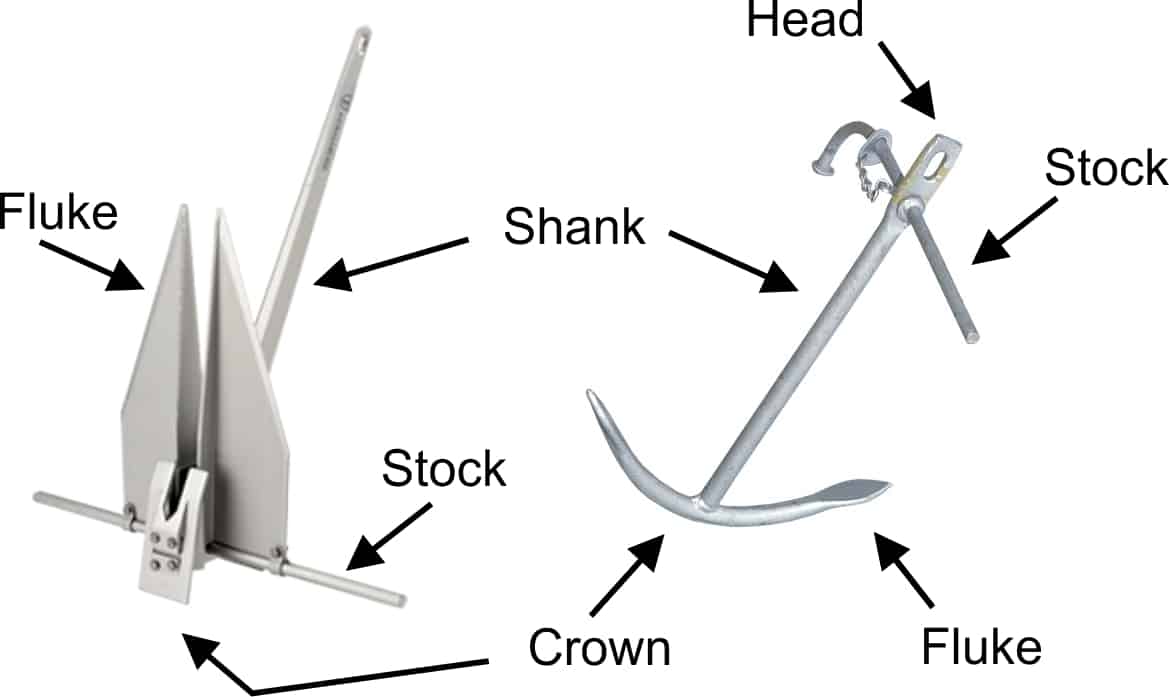
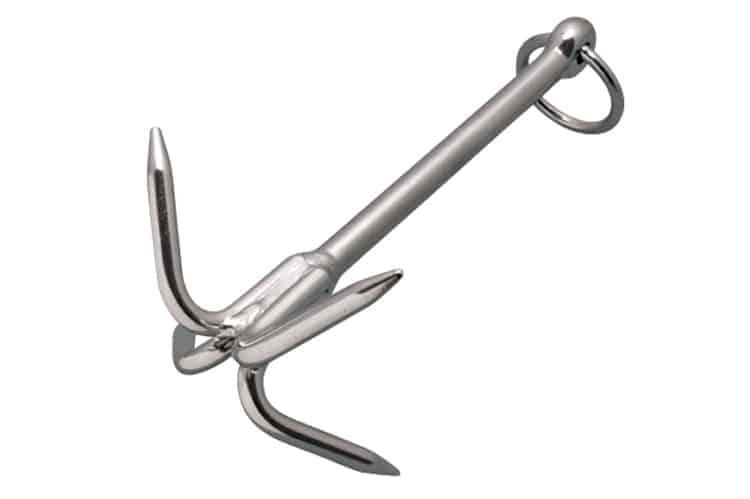
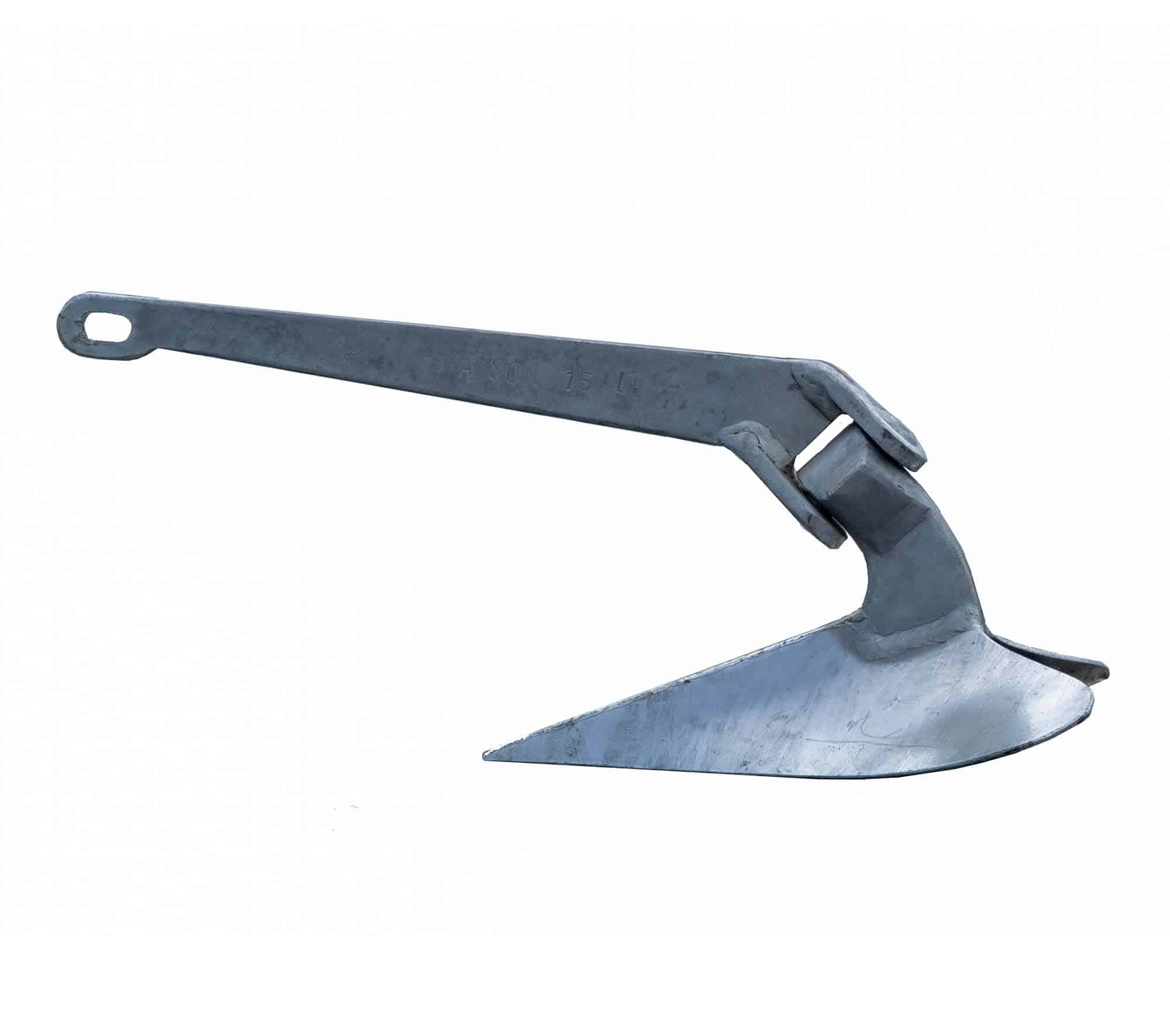
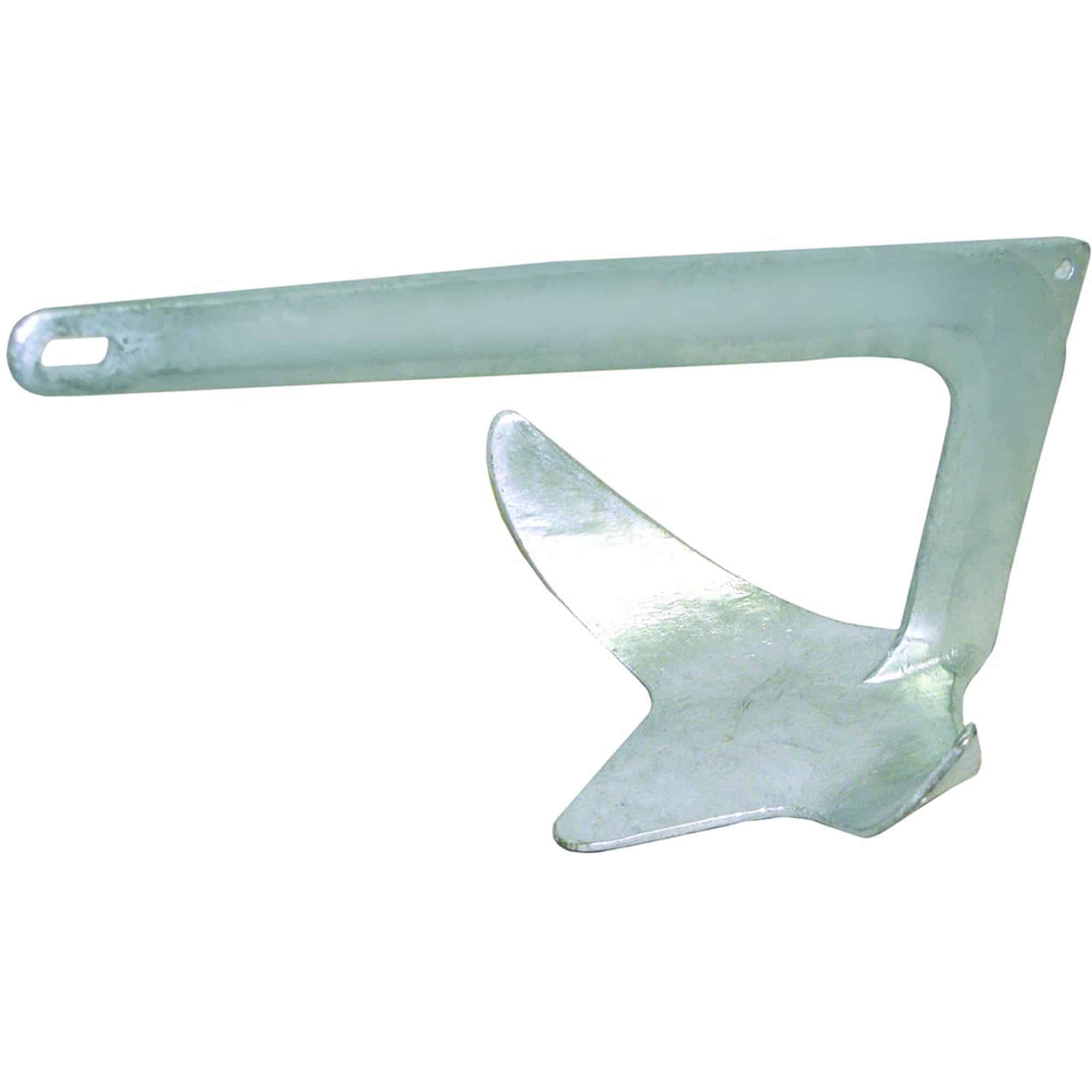
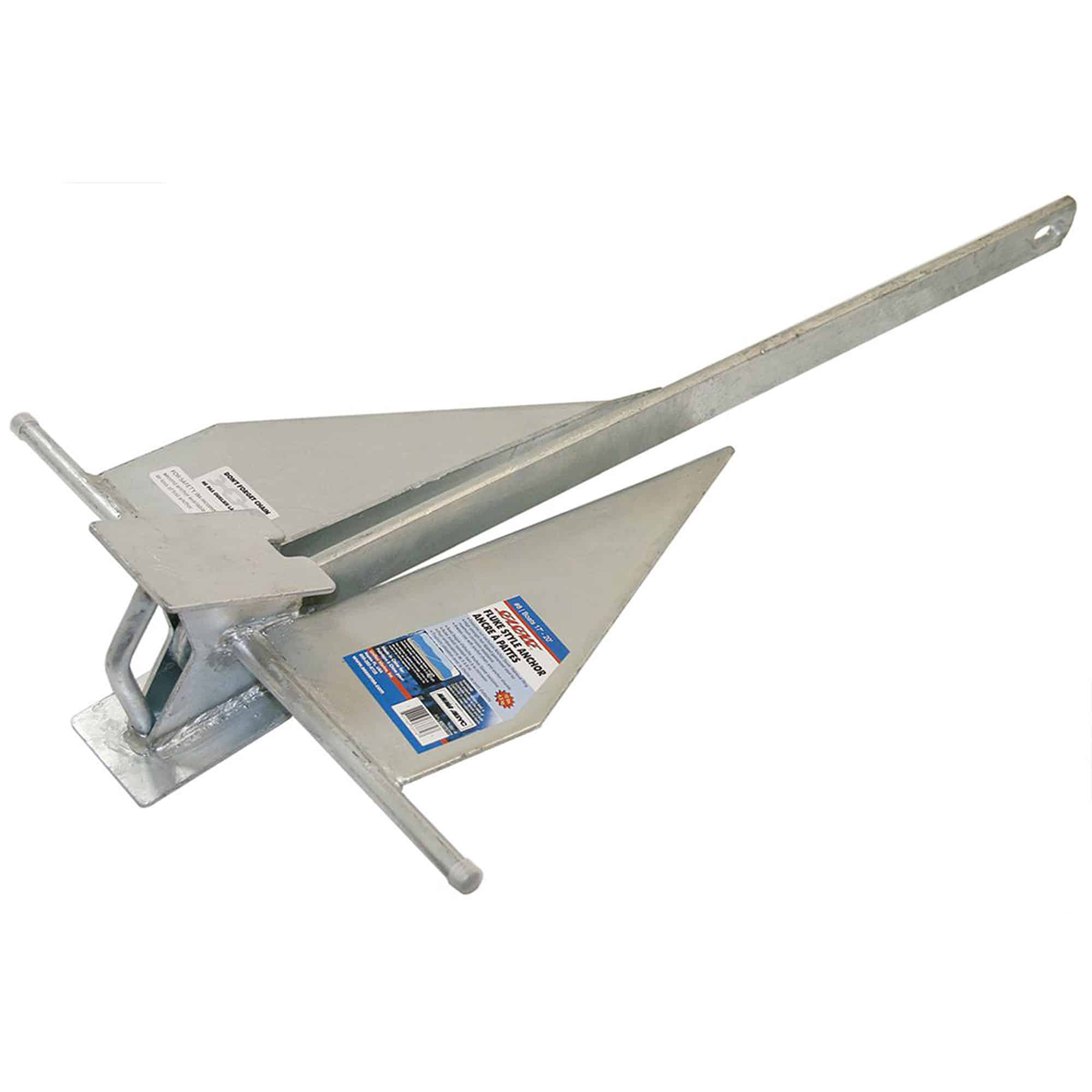
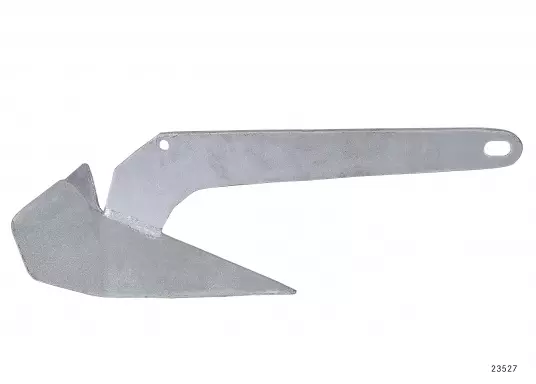
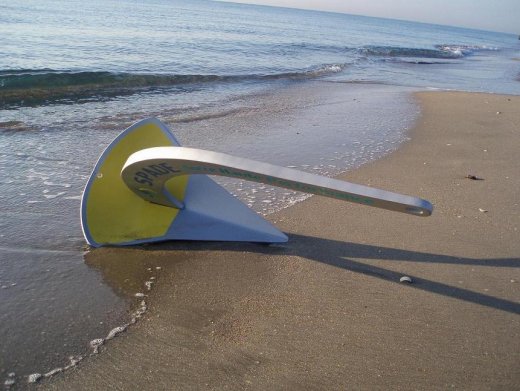
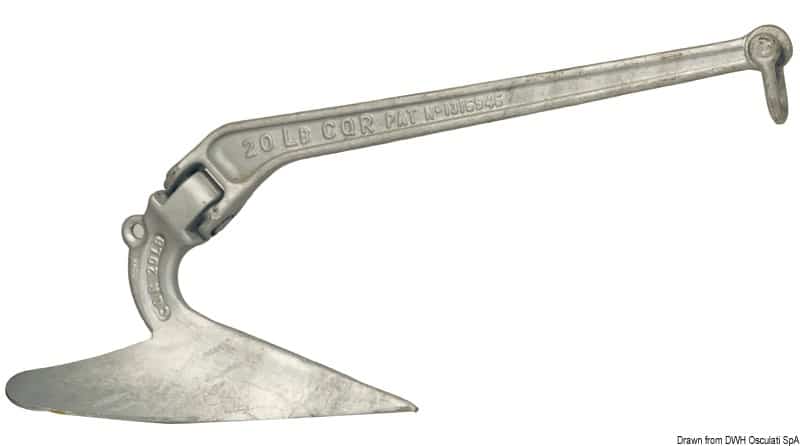
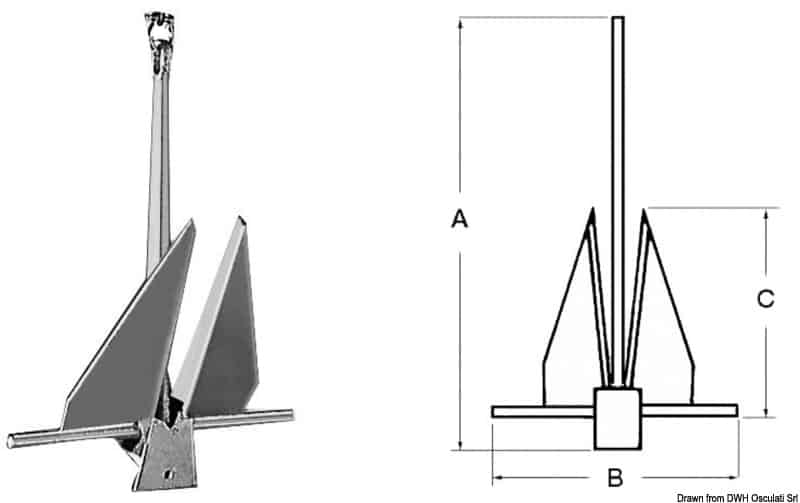
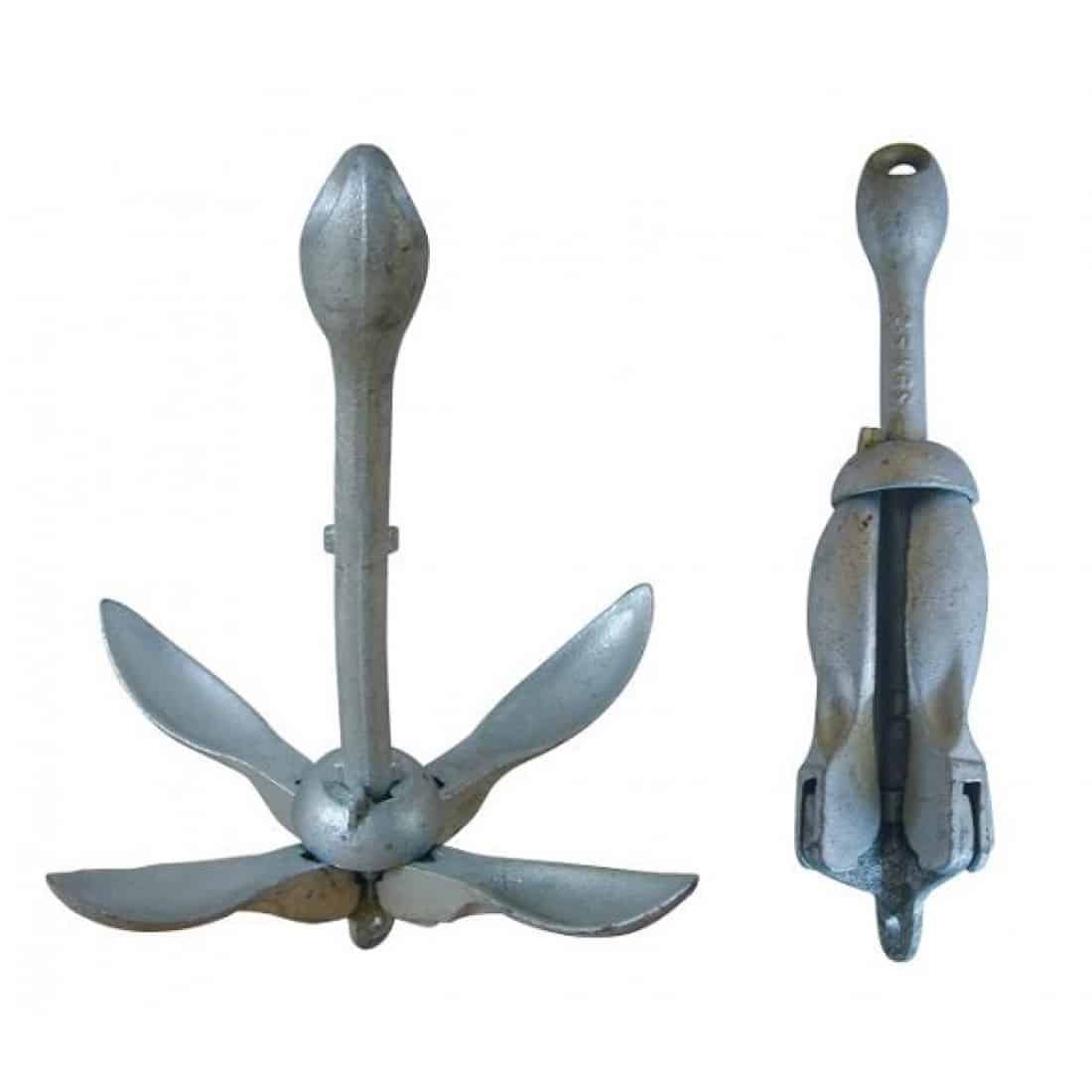
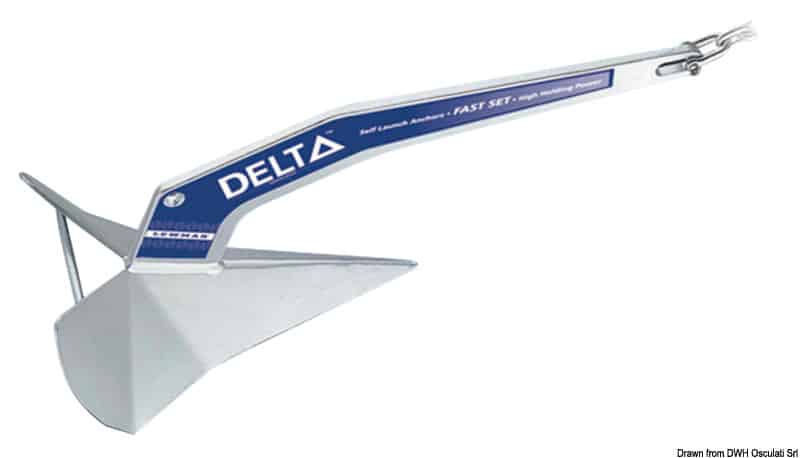
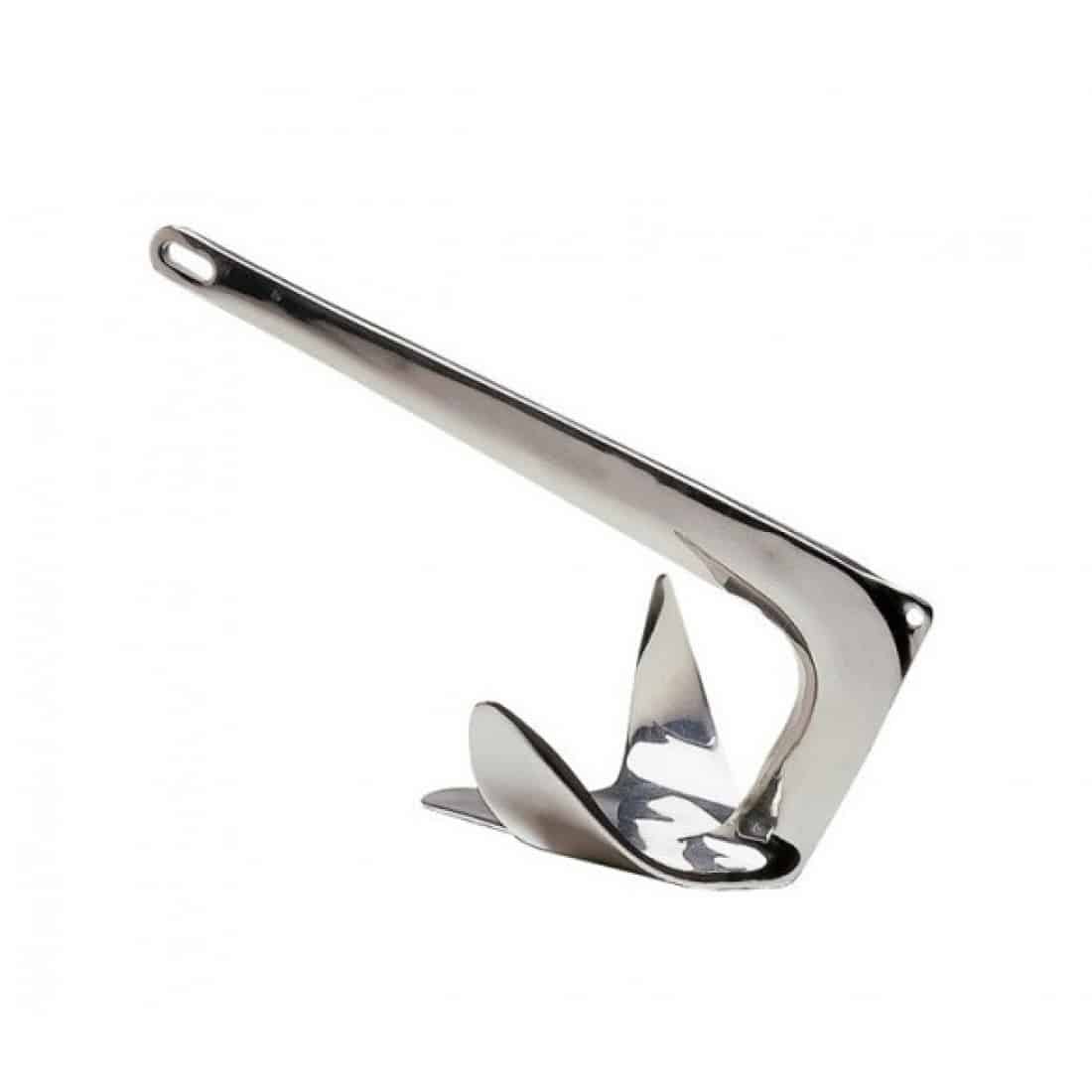
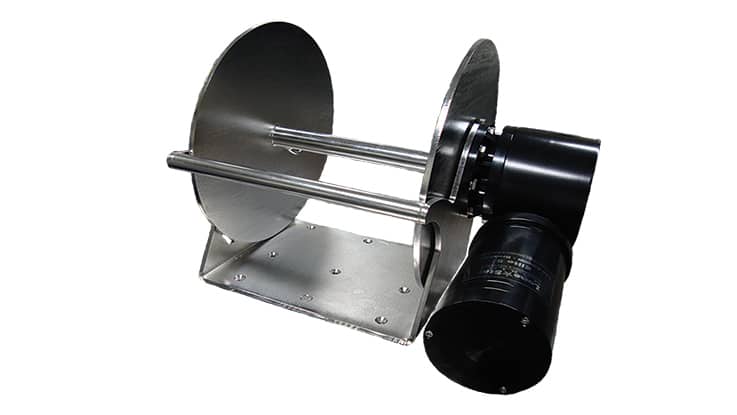
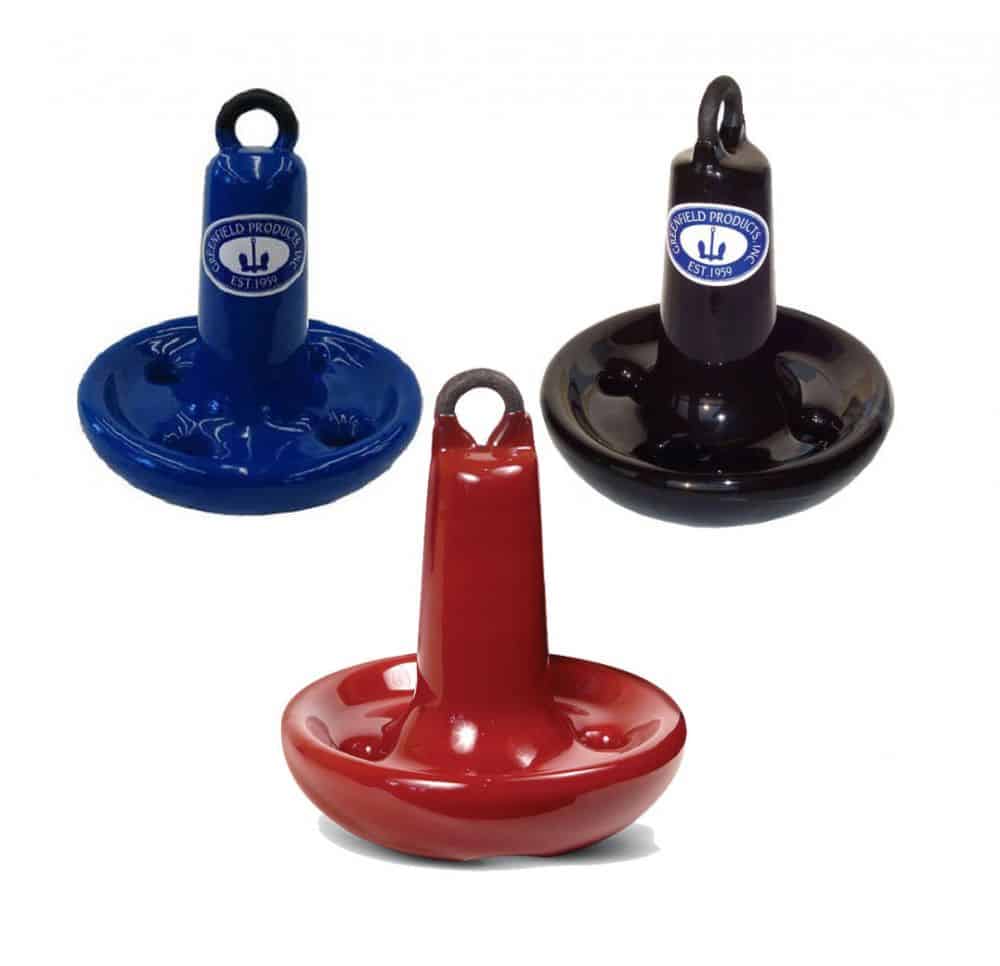
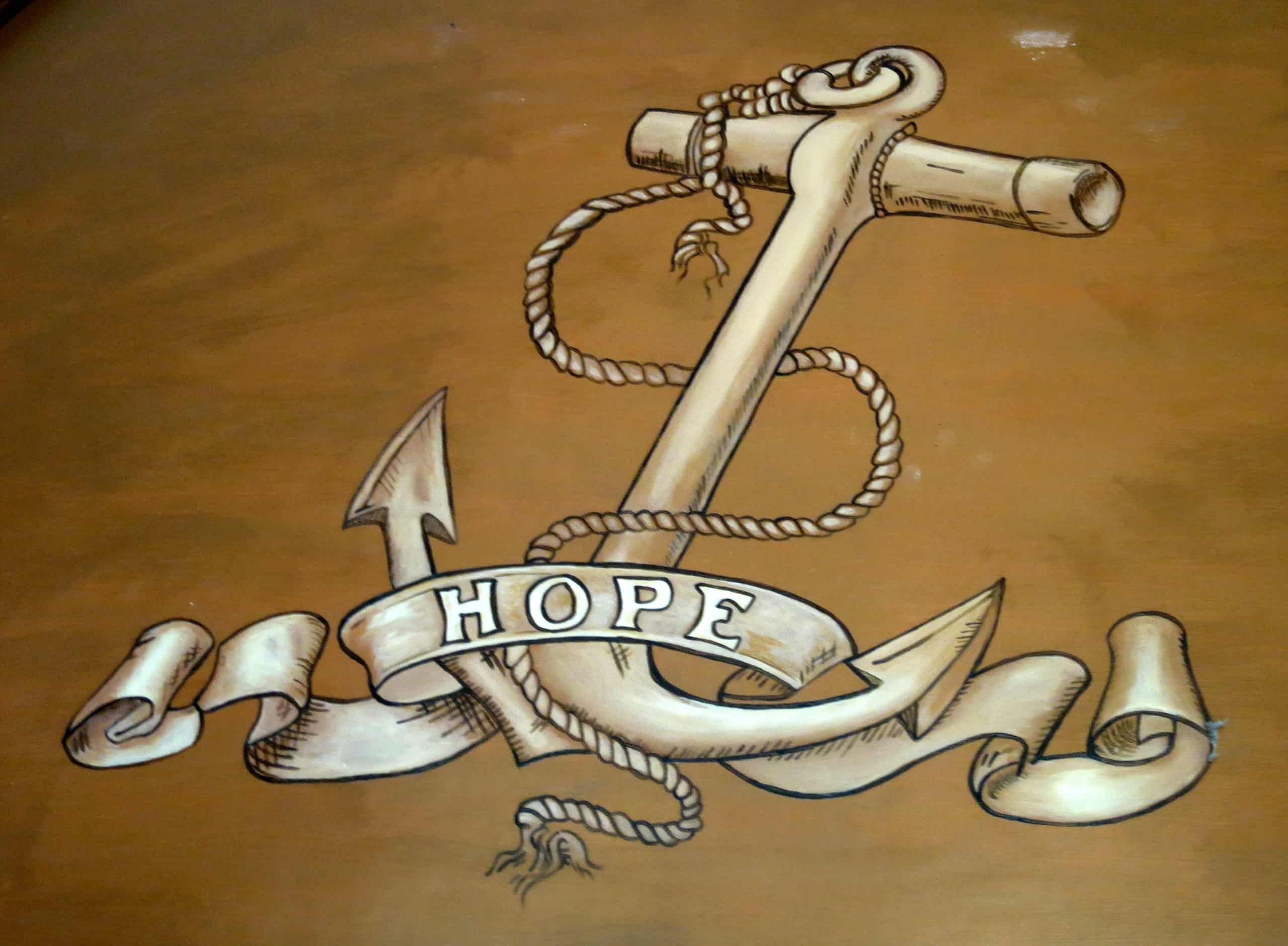
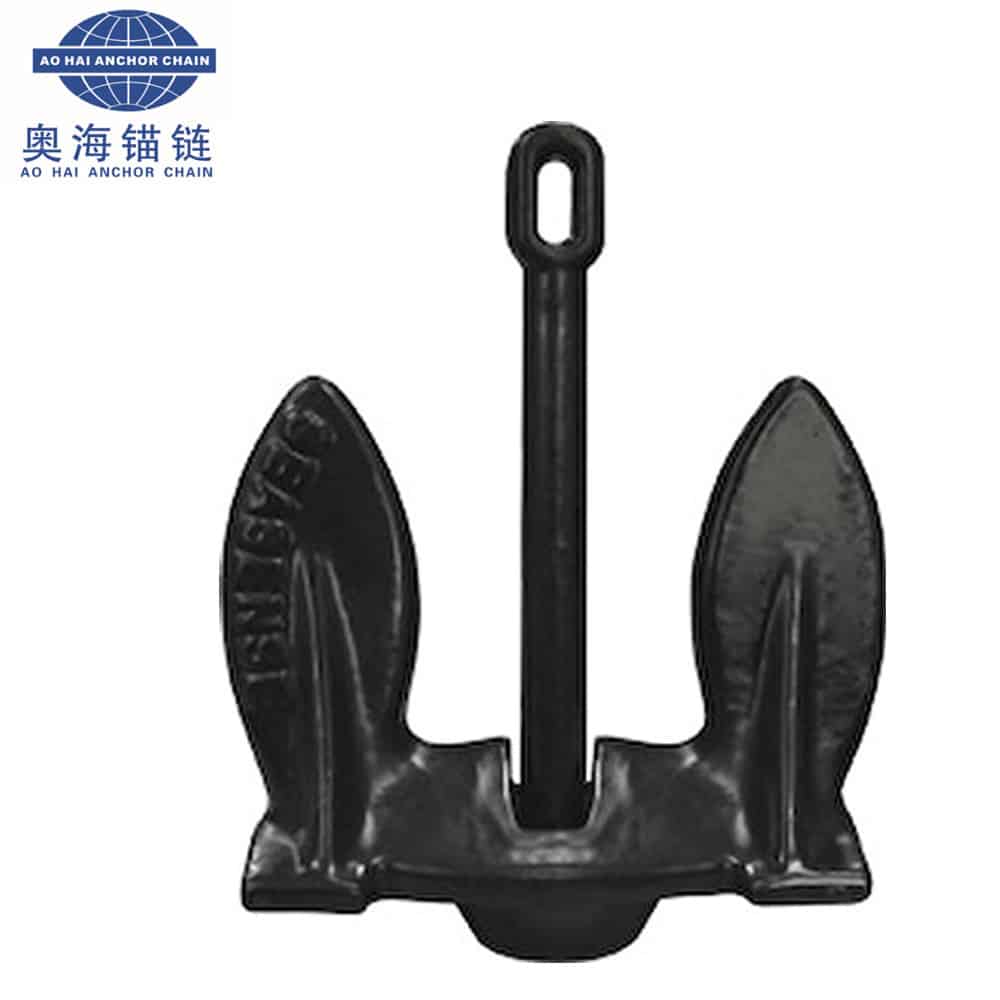
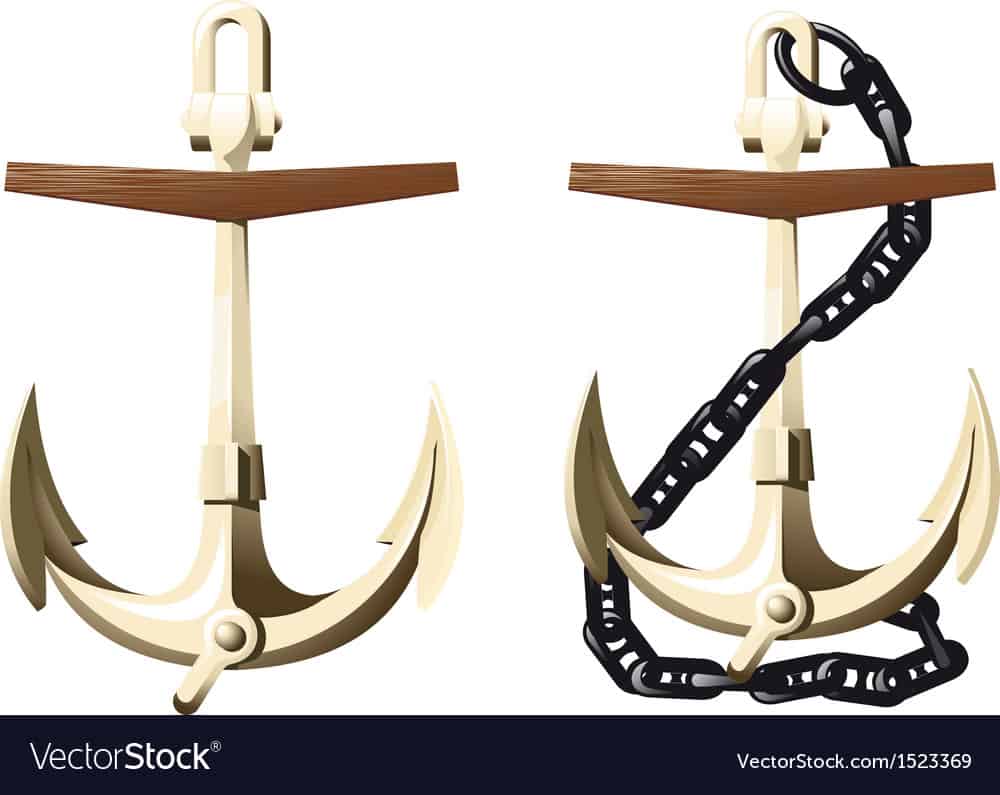
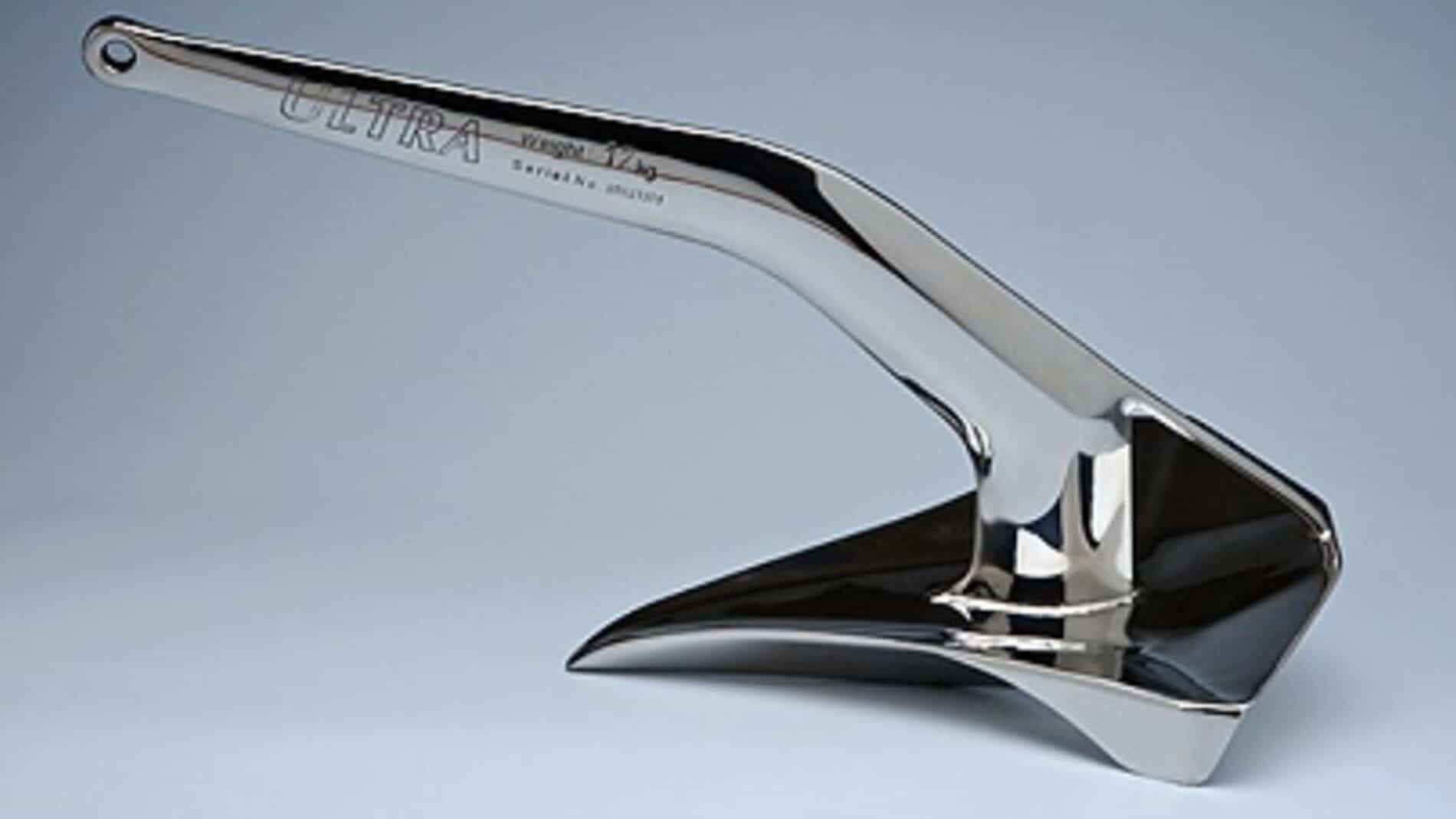
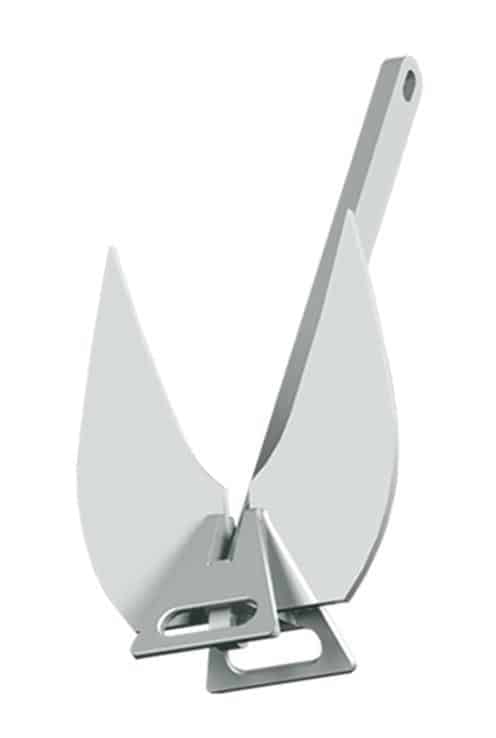
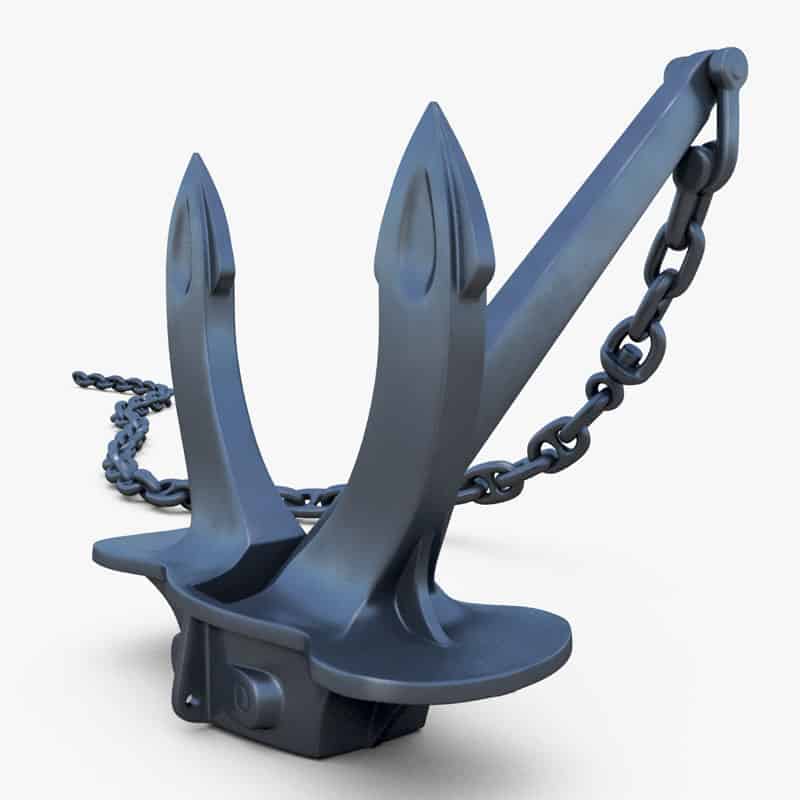
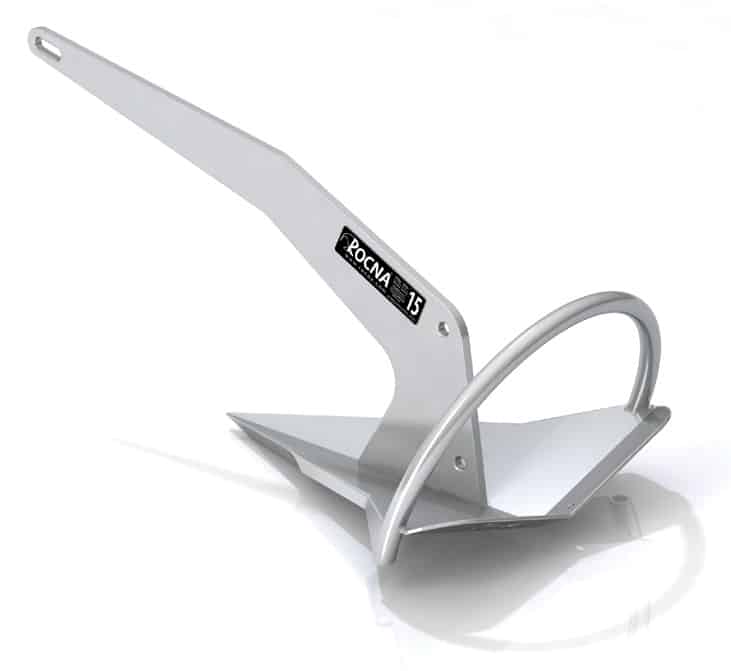
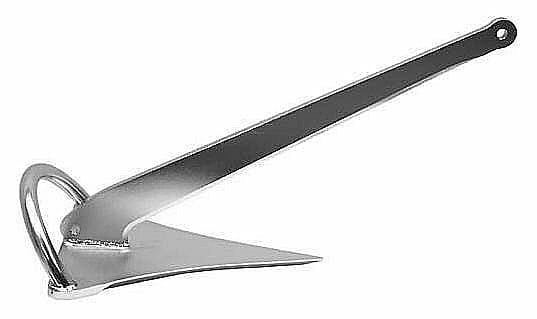
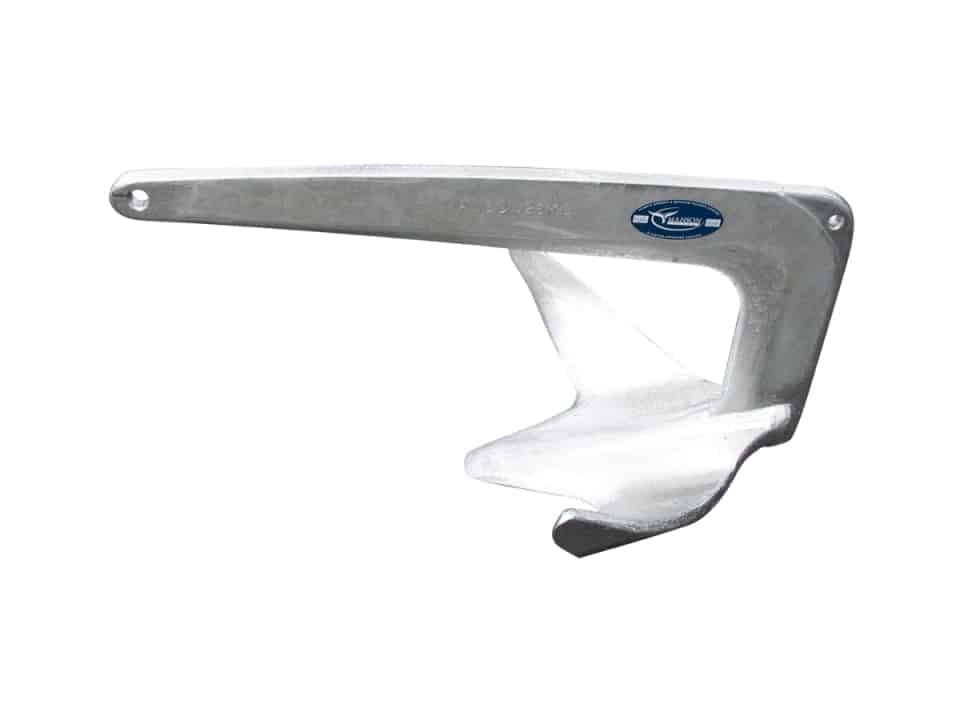
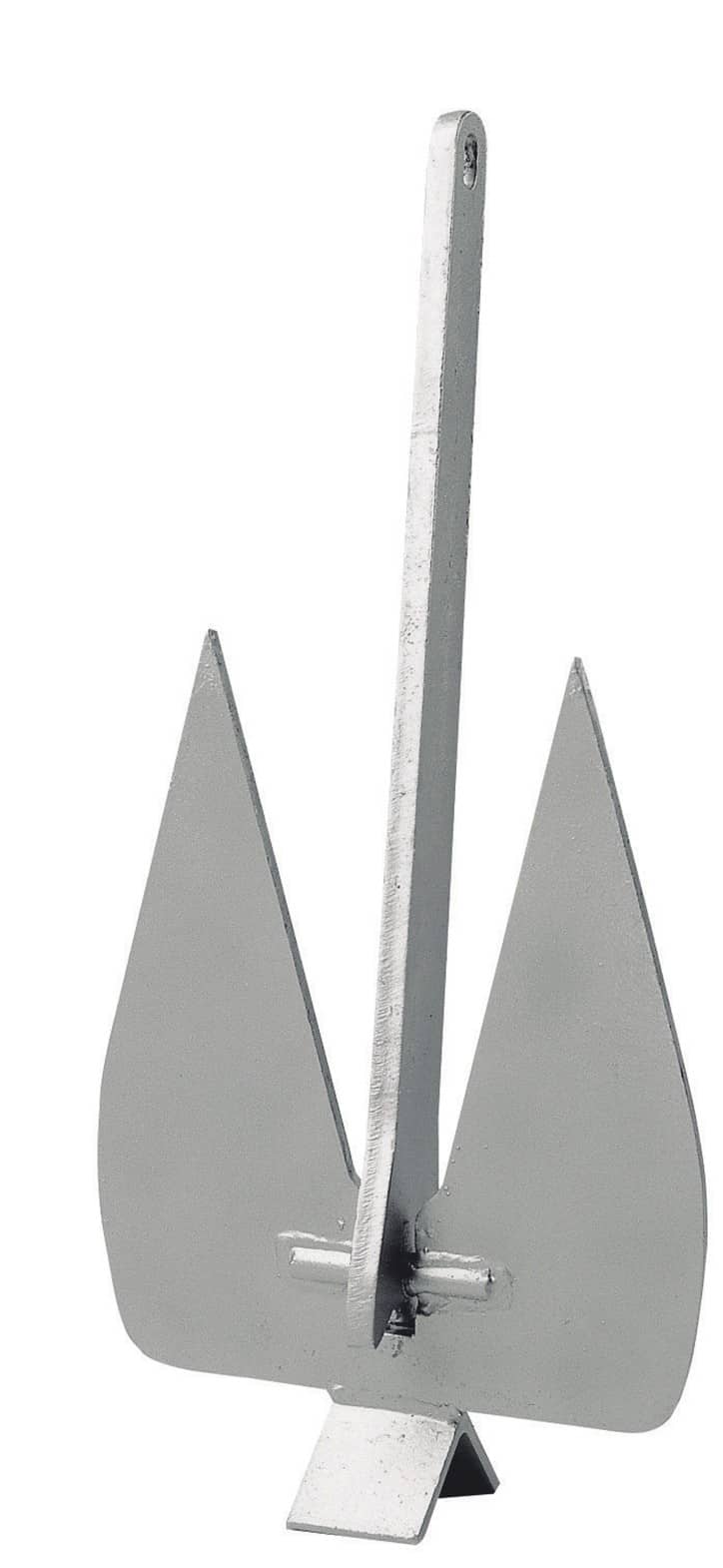
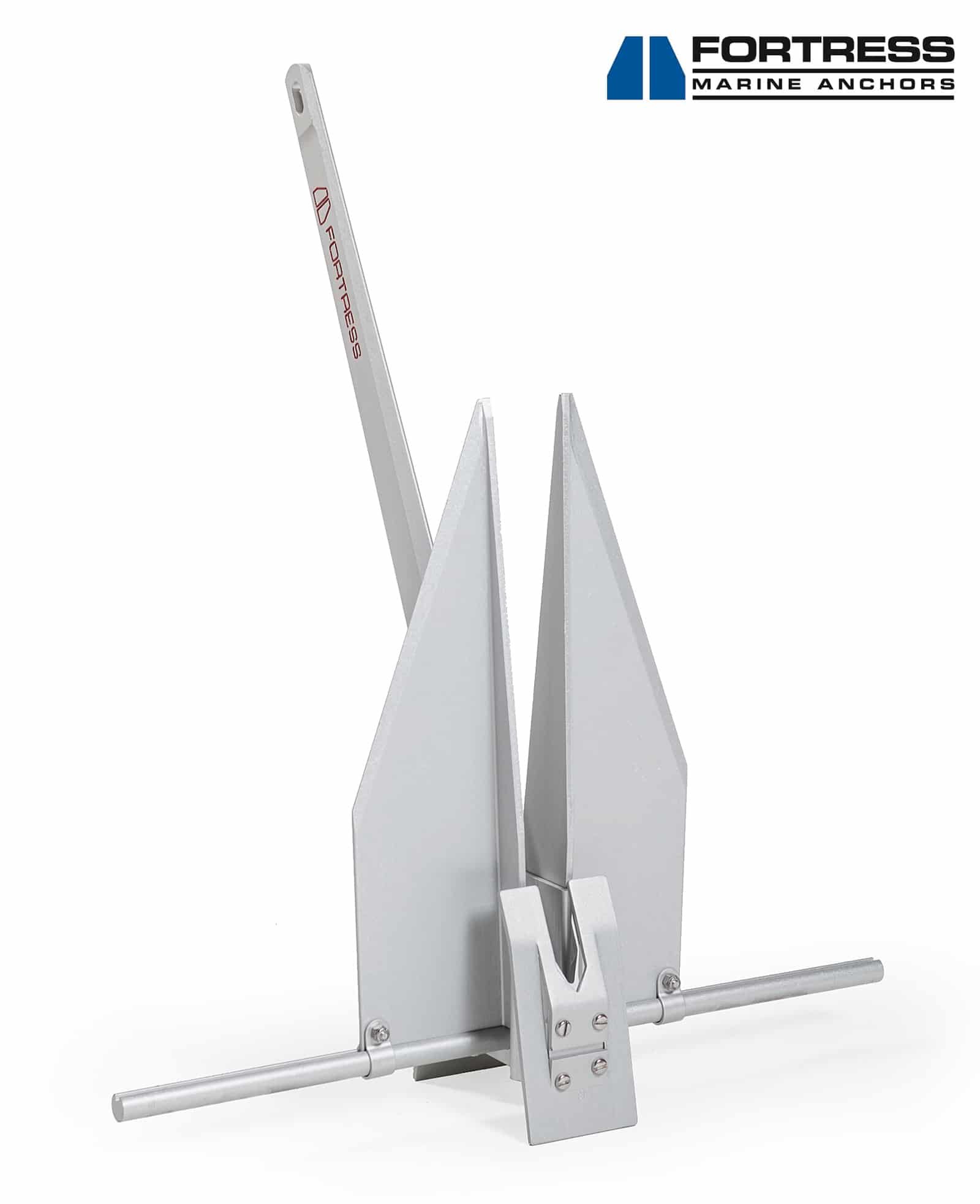
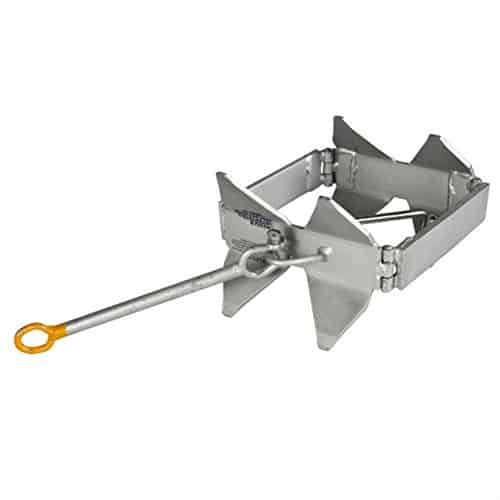
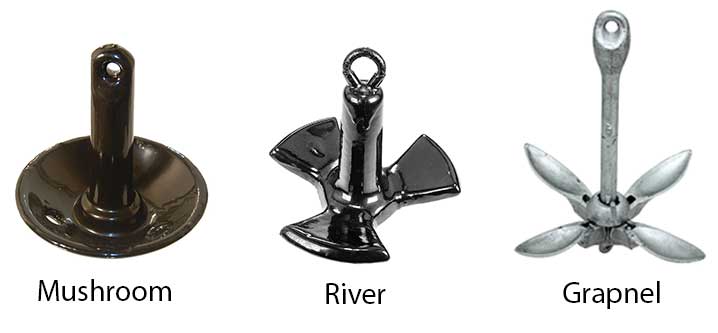
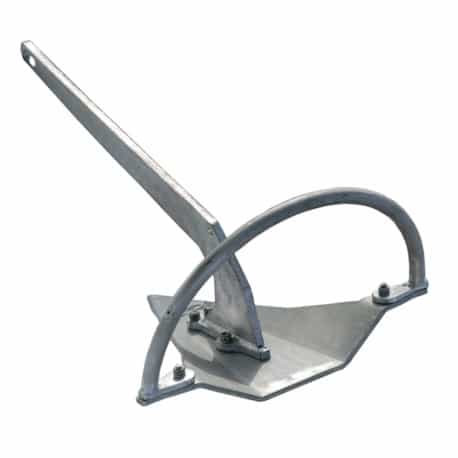
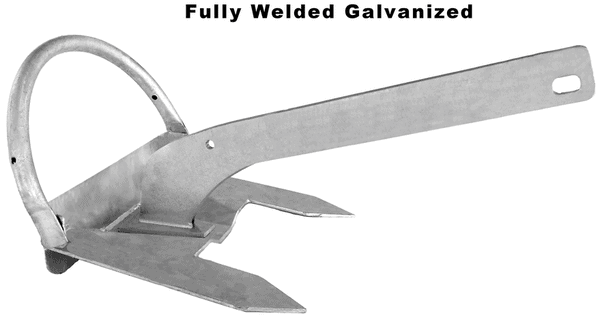
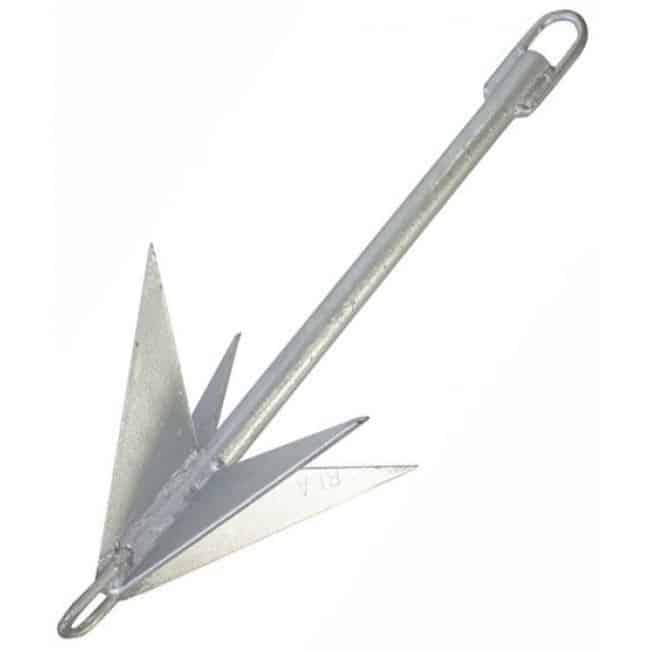
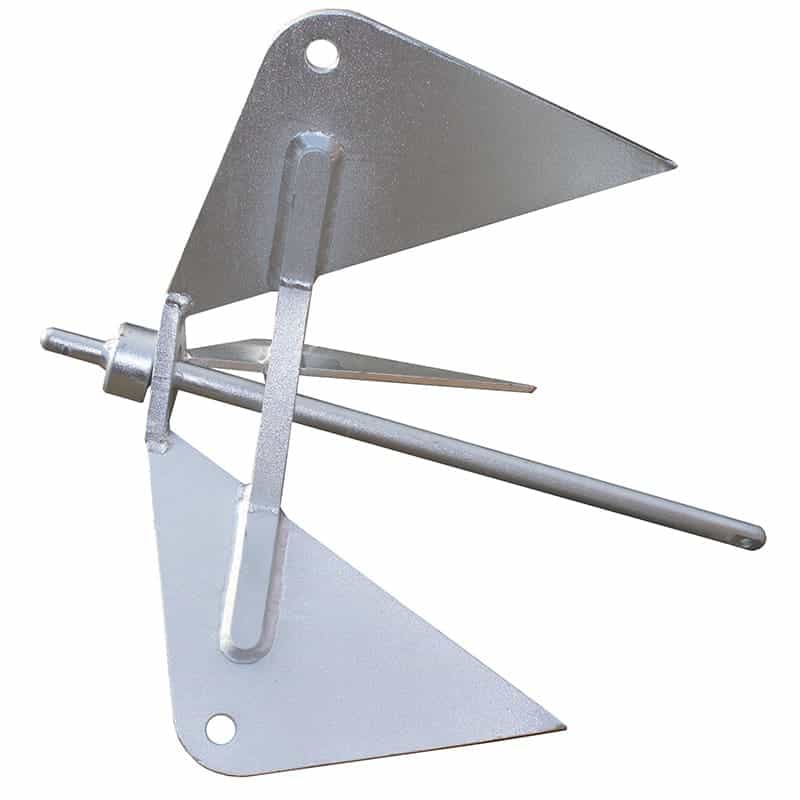
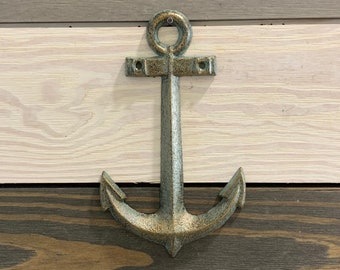
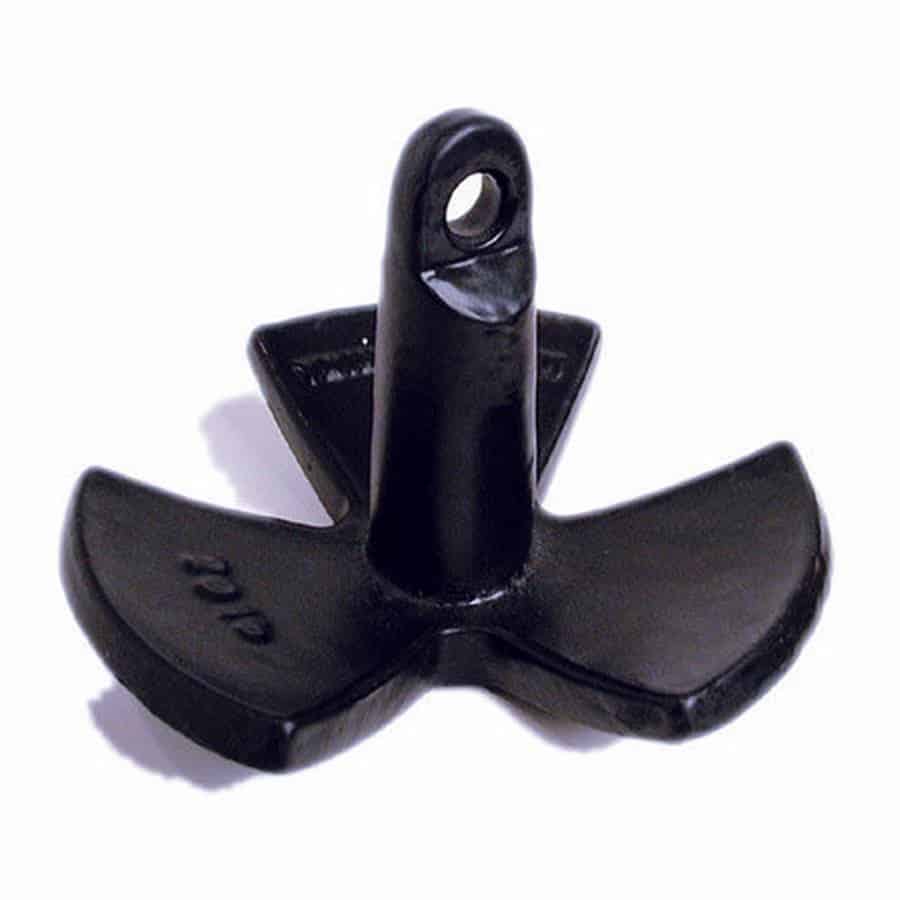
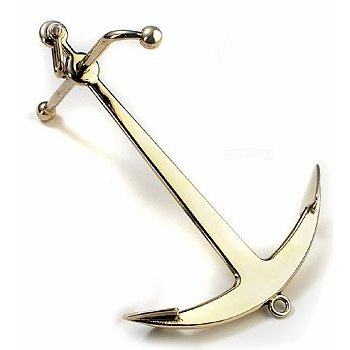
Thank you very much for your thorough effort in defining and explaining the different types of anchors. Hesham from Egypt!